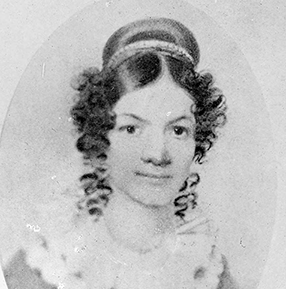To the Miscodeed
Sweet pink of northern wood and glen,
E’er first to greet the eyes of men
In early spring,—a tender flower
Whilst still the wintry wind hath power.
How welcome, in the sunny glade,
Or hazel copse, thy pretty head
Oft peeping out whilst still the snow,
Doth here and there, its presence show
Soon leaf and bud quick opening spread
Thy modest petals—white with red
Like some sweet cherub—love’s kind link,
With dress of white, adorned with pink
This poem is in the public domain. Published in Poem-a-Day on November 25, 2023, by the Academy of American Poets.
“To the Miscodeed” is collected in The Sound the Stars Make Rushing Through the Sky: The Writings of Jane Johnston Schoolcraft (University of Pennsylvania Press, 2007). In a note beneath the poem, Robert Dale Parker, professor of English and American Indian studies at the University of Illinois, writes, “One of the first spring wildflowers, the miscoded (in Ojibwe), Claytonia virginica (in Latin), or spring beauty is typically white with pink veins, though sometimes it is all pink. [. . .] Readers might like to compare ‘To the Miscodeed’ with such once widely read early American poems about wildflowers or blossoms as Philip Freneau’s ‘The Wild Honey Suckle,’ William Cullen Bryant’s ‘The Yellow Violet’ and ‘To the Fringed Gentian,’ and Ralph Waldo Emerson’s ‘The Rhodora.’” Elsewhere, in The Cambridge History of Native American Literature (Cambridge University Press, 2020), Parker writes, “After the long harsh winter of Schoolcraft’s home in what is now northern Michigan, she welcomes the spring and its ‘tender’ harbinger, the miscodeed, praising the little flower’s modesty as if it were a ‘pretty’ young woman in a white and pink ‘dress.’ She also describes the flower as ‘white with red,’ as if to suggest that, like Schoolcraft and her siblings, the children of an Anishinaabe woman and an Irish man, the miscodeed is both Indian and white, amidst the snow but not entirely of the snow. In that context, even the Anishinaabe name of the flower can hint at ‘mixed deed’ in English.”

